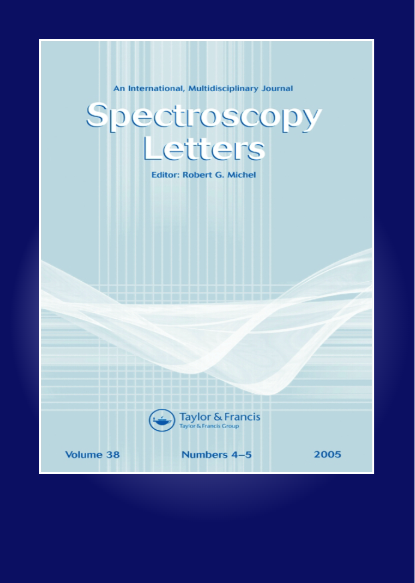用光谱和计算方法研究药物-腺嘌呤复合物的相互作用机制
IF 1.1
4区 化学
Q3 SPECTROSCOPY
引用次数: 3
摘要
摘要利用振动光谱和密度泛函理论对生物分子复合物、腺嘌呤和类风湿性关节炎药物进行了表征。利用傅立叶变换红外光谱、拉曼光谱和表面增强拉曼光谱技术对生物分子进行光谱表征。利用密度泛函理论方法对分子进行了优化和理论计算。采用Becke–Lee–Yang–Parr方法计算了腺嘌呤单体、羟氯喹单体及其相互作用状态的前沿分子轨道、分子静电势、自然键轨道参数、热力学性质和一阶超极化率,基组为6-311G + (d,p)。量子理论分子中的原子研究是为了研究拓扑参数,如电子密度、电子密度的拉普拉斯算子和能量密度。单个分子和相互作用分子的振动分配是通过振动能量分布分析程序完成的。理论值和实验值基本一致。还研究了生物分子复合物的类药物行为。针对人类滑液sPLA2进行分子对接研究,以确定最佳结合位点。本文章由计算机程序翻译,如有差异,请以英文原文为准。
Spectroscopic and computational approach to study the interacting mechanism of drug-adenine complex
Abstract The biomolecular complex, Adenine and Rheumatoid Arthritis drug are characterized using vibrational spectroscopy and density functional theory. The spectral characterization of the biomolecule is undertaken by using Fourier transform infrared spectroscopy, Raman and surface-enhanced Raman spectroscopy techniques. The optimization and theoretical calculation of the molecules are performed using the density functional theory method. The frontier molecular orbital, molecular electrostatic potential, natural bond orbital parameters, thermodynamic properties, and first-order hyperpolarizability of the adenine monomer, hydroxychloroquine monomer, and their interacting state are calculated by Becke–Lee–Yang–Parr method with a basis set of 6-311G + (d, p). The Quantum Theory Atoms in Molecules study is performed for investigating the topological parameters, such as the density of electrons, the Laplacian of electron density, and the energy density. The vibrational assignment of the individual and interacting molecules is accomplished through the Vibrational Energy Distribution Analysis program. The theoretical and experimental values show good agreement with one another. The drug-likeliness behavior of the biomolecular complex is also studied. The molecular docking studies of the molecules are carried out against human synovial fluid sPLA2 to determine the best binding sites.
求助全文
通过发布文献求助,成功后即可免费获取论文全文。
去求助
来源期刊

Spectroscopy Letters
物理-光谱学
CiteScore
2.90
自引率
5.90%
发文量
50
审稿时长
1.3 months
期刊介绍:
Spectroscopy Letters provides vital coverage of all types of spectroscopy across all the disciplines where they are used—including novel work in fundamental spectroscopy, applications, diagnostics and instrumentation. The audience is intended to be all practicing spectroscopists across all scientific (and some engineering) disciplines, including: physics, chemistry, biology, instrumentation science, and pharmaceutical science.
 求助内容:
求助内容: 应助结果提醒方式:
应助结果提醒方式:


